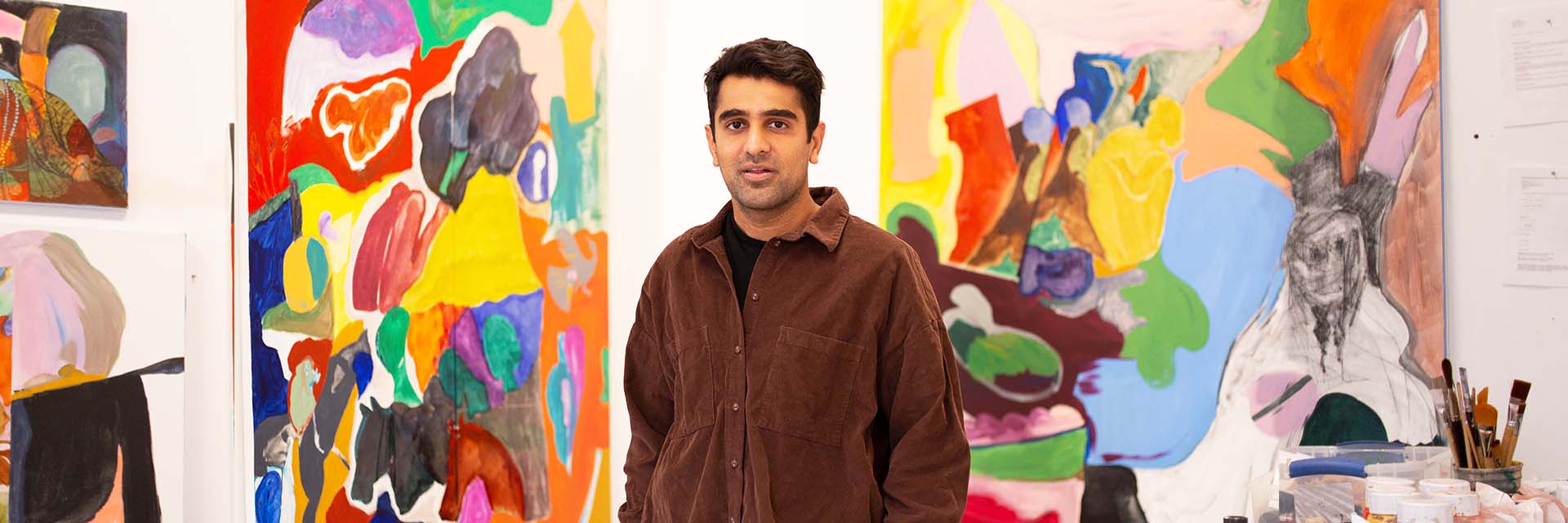(July 11, 2022) When he first picked up a blank piece of paper as a child to pour out the colours of his imagination, little did Viraj Mithani know that had found his true calling. In years to follow, his passion for “reclaiming Indian art that has been lost due to colonisation” earned him a name in the contemporary art world. “Nothing entered the academia, and we as a society didn’t do anything to reclaim the narrative. Interestingly, we have been seeing art through Western lens. To the general population in India, the knowledge of art still starts and ends with Picasso,” he tells Global Indian. The Forbes 30 Under 30 artist is currently doing a master’s in painting and printmaking from the Rhode Island School of Design.
In 2017, Viraj, the founding member of ‘Carpe Arte’, with a bunch of like-minded people helped to create a community that supports Indian contemporary art. “We wanted to make art more accessible, and so we organised gallery walk-throughs and talks.” During the pandemic, they built an online community which is ever growing. “Helping people navigate the art space that most are intimidated to explore alone is where we come in,” says Viraj who believes art is an unknown territory for many people. “You know what to expect in a movie hall, but not in an art gallery. We help bridge the gap by helping people explore the spaces in groups and learn more about art.”
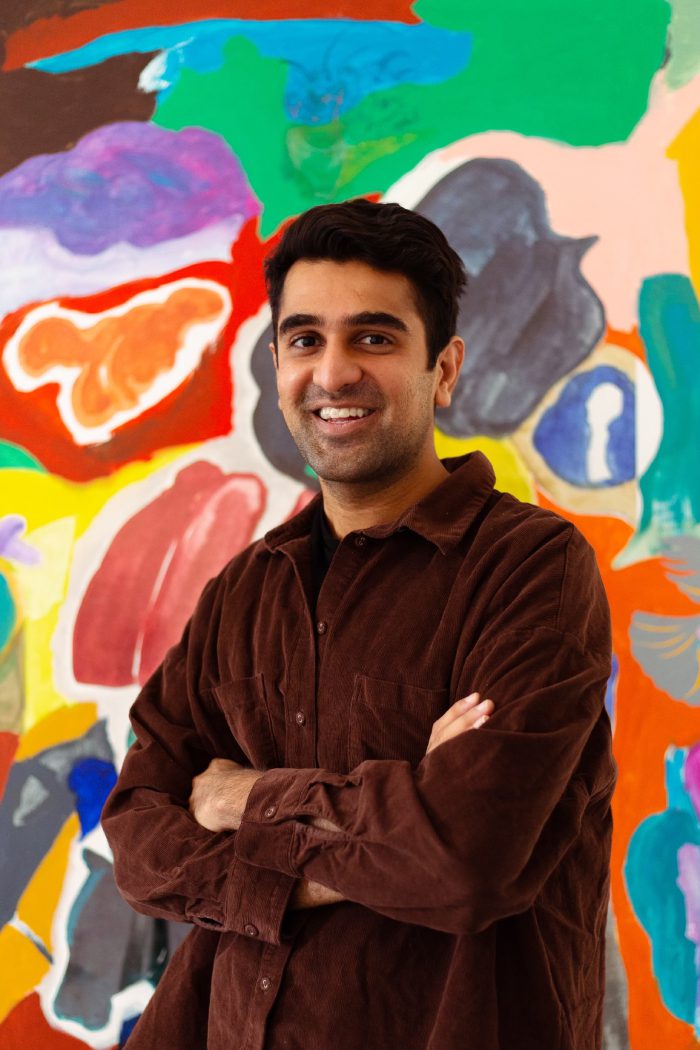
Viraj Mithani at Rhode Island
The young artist is also challenging the status quo by combining technology with art. “Technology is the point of curiosity that influences the medium. I am interested in exploring the complexities of plastic age,” says Viraj, who exhibits a wide collection of plastic wrappers (over the video call) that he plans to use in mixed media. “The digitisation and the rapid consumption, and how it comes into play with the history of art which got lost. It’s interesting to know how it would have turned out in recent times had it flourished and how it would have influenced the pop culture,” he adds.
An artist in the making
Art was more than just a subject for this Mumbai-born since childhood. For hours, he would sit in front of a blank paper onto which he would pour his imagination. “I was always in love with art, but my earliest memory goes back to third grade, drawing on an A4 size sheet,” smiles Viraj, who continued the process for the next few years before starting elementary, then intermediate formal training in art. Having a strict tutor who would make him draw “50 compositions in two days”, he honed his craft in what he calls his “training ground.” By the time he finished grade ten, he knew he wanted to pursue art professionally. Despite “initial apprehension” from his dad, his family supported him in following his dream. “No one in my family had previously pursued anything in the creative field, and it wasn’t common to see kids thinking about fine arts as a profession. But our decisions were always respected and supported,” says the artist who put in his heart and soul for the next two years to prepare his portfolio.
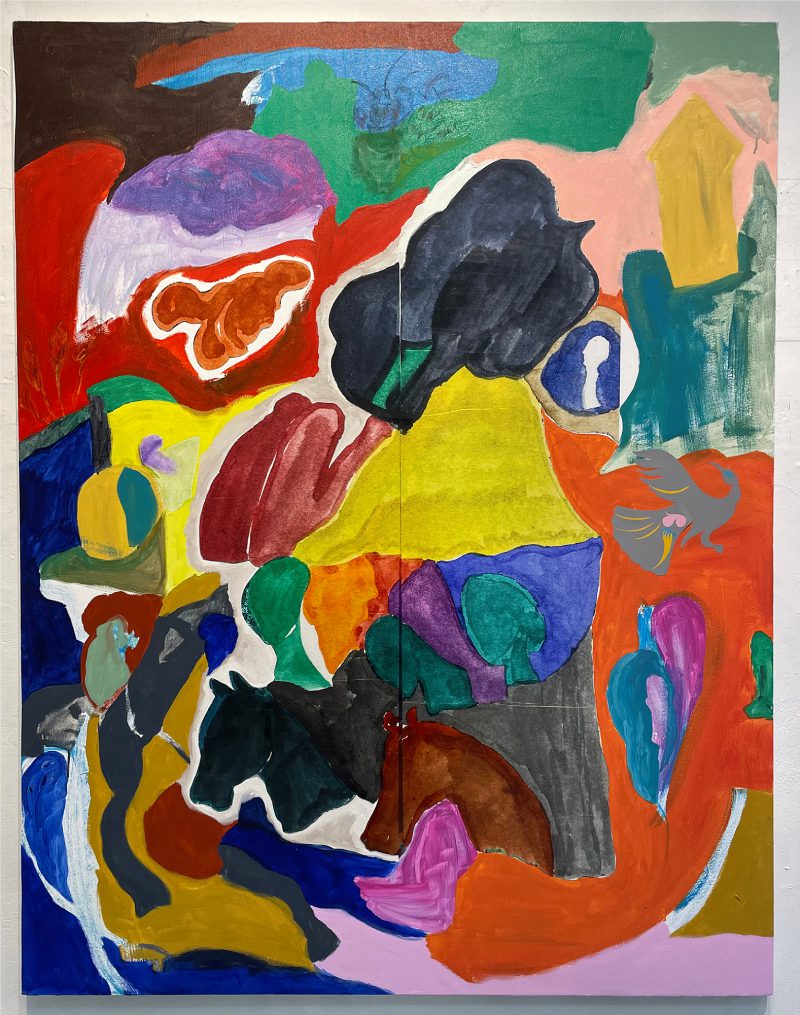
Viraj Mithani’s Arrives on the island of Sangaldip
Having grown up in an education system where art is only considered as a co-curricular activity, he felt “limited”. “It was frustrating to be unable to express my creativity and talent as there were not many opportunities. But I felt great when I was making art,” says Viraj who participated in every art competition across fests during his college days. This passion for arts took him to University of Arts London in 2011, which gave him the perfect foundation. Despite being in love with the eclectic city that is known for its art scene (galleries, museums and broadways), Viraj wasn’t too convinced with their education system, and moved to School of Art Institute of Chicago in 2012 for its “interdisciplinary curriculum.”
“It gave me the freedom to pursue things the way I wanted,” says the artist. However, this uprooting made him see a stark contrast in the education systems in India and the US. “In India, we copy the compositions of other artists, and 80 percent of my portfolio was that, when I had applied. We believe in perfecting our skills in India, but in the US, the focus is on authenticity,” explains Viraj who took one year to unlearn. “I learnt how to cultivate my own voice. It took me sometime to consciously break away and look at things with a newer perspective.”
Giving Indian art a voice
Calling art a part of Western American/European culture, Viraj feels art galleries and museums abroad have a “monumental aura”. “The way they preserve art and history is impressive and fascinating.” However, the contemporary artist believes in India’s rich history of art forms and crafts. “To give a few examples – Warli and Madhubani painting were community built and used organic products. But we lost our art and culture due to colonisation.” But he’s bringing these traditional art forms to the foreground with his work.
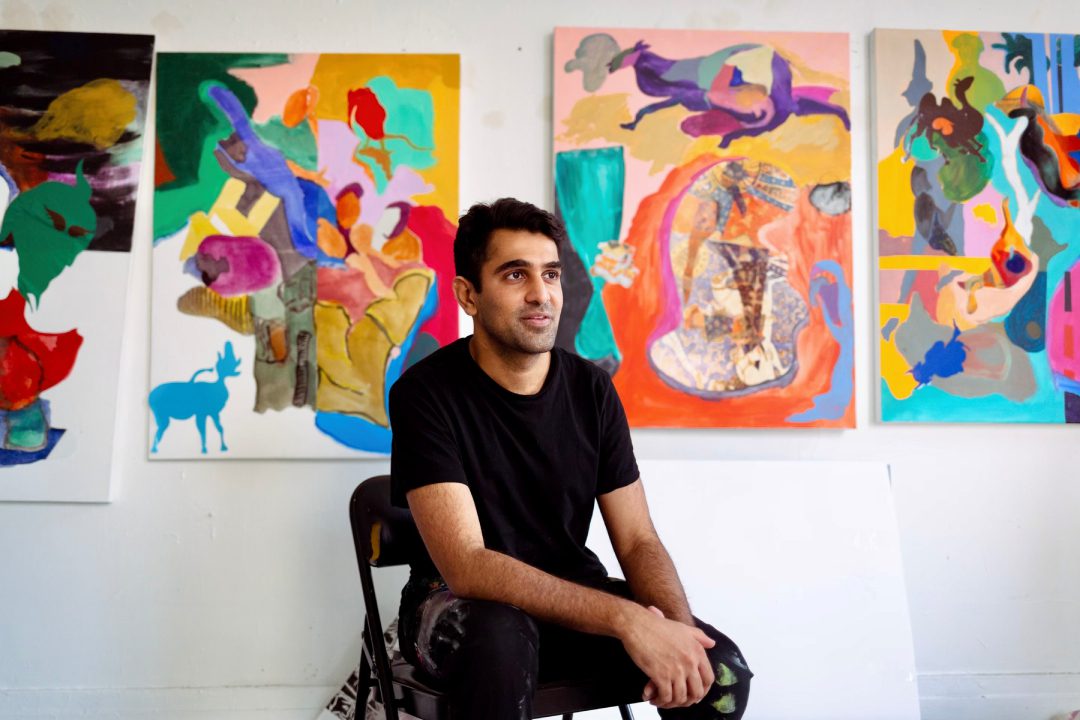
Being an intrinsic part of the art scene for the last few years, he believes that while art in India is at its “nascent stage”, it’s “spearheading the vibrant and upcoming space in South Asia.” However, he feels “government support” is fundamental in growth of art space in India. “With 95 percent art space run by private entities, change needs to happen, especially in terms of grant and funding. Currently, it’s surviving not thriving.”
The world is his canvas
With the art space across the globe ever evolving, it’s an era of global artists. “With the advent of the internet, the world has become cohesive. The boundaries are blurring and a very cross-cultural dialogue is happening among artists, in terms of talks, panel discussions and exhibitions.” Viraj, who has lived in India, UK and the US, and has his art exhibited across the globe calls himself “an Indian by nationality”, but he identifies as a “citizen artist.” “Having lived in many places, it affects our lifestyles and what we think and do.” An artist who is curious about combining technology with art, Viraj believes that Indian art never found its day in the sun. But he is happy that new artists are challenging the statusquo and re-evaluating, including him. Having grown up on mythological tales, Viraj wants to “combine it with the Western influences, and create something that fits the pop culture.”
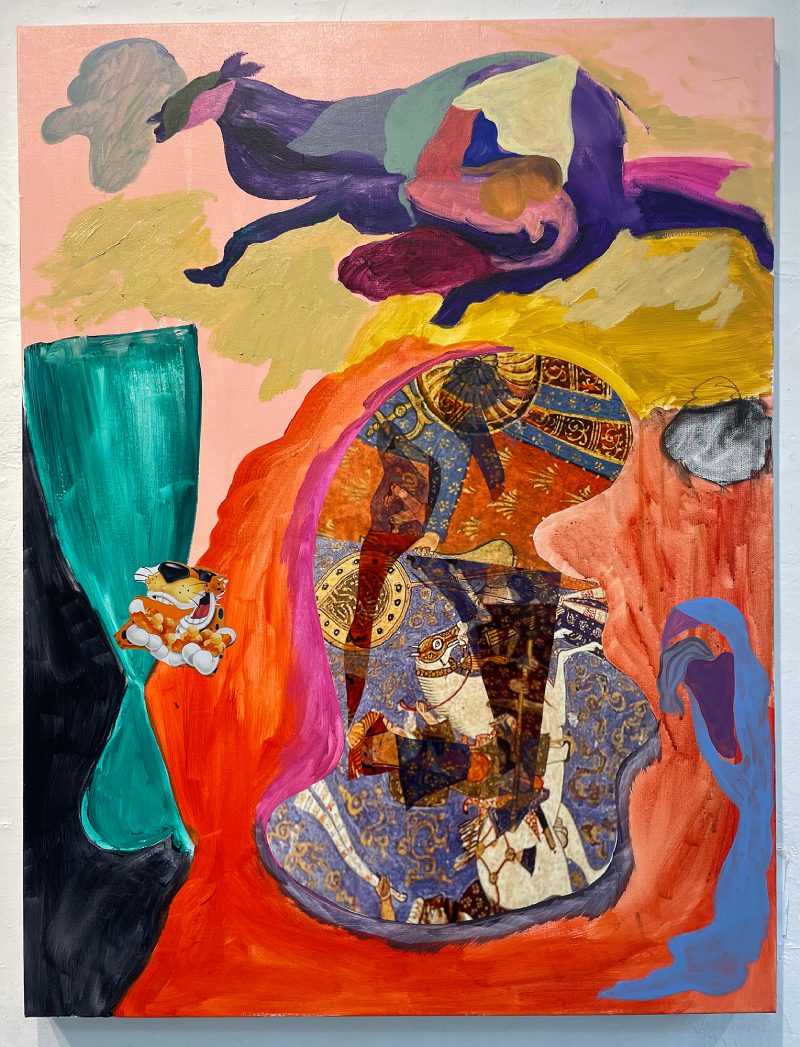
Jupiter as Heavenly King by Viraj Mithani
An artist, who has been pushing boundaries with each of his artworks, found himself on the Forbes 30 Under 30 2022 list, and it was a moment of gratitude for him. “Coming from a place where I have been constantly questioned about my artwork and my choices, this feels good to know that I am noticed. It’s a good validation that I have set a benchmark as an artist.” For Viraj, all these years in art have been a learning curve as they helped him understand people and their ideologies. “I have learnt how to fully disagree, and respect other point of views as everyone comes with their unique set of values, regionally and culturally.”
An art lover, he loves exploring galleries and putting up shows. But it is chess, movies and board games that help him unwind. He intends to “reclaim history that’s been neglected for too long” and use his artwork to “tie up different cultural fabrics”.
- Follow Viraj Mithani on Linkedin

